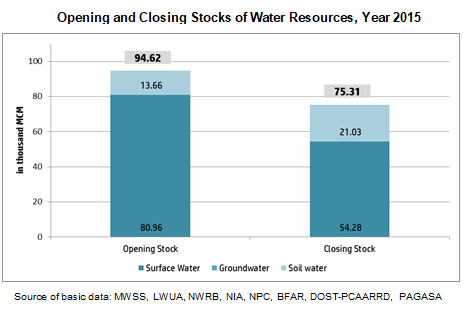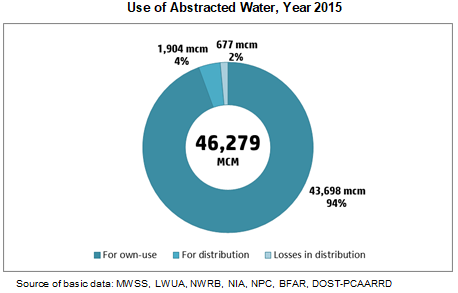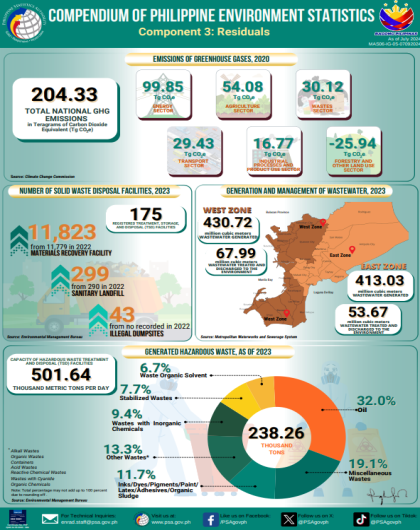Asset Accounts for Surface Water and Soil Water
The stock of surface and soil water in the country showed a decline of about

The largest reduction in stock is attributed to abstraction of water as input to economic activities. In 2015, a total of
Flow Accounts for Water Resources
Of the 46,279 MCM of abstracted water in 2015, 94 percent, or around 43.7 MCM was used or consumed by the economic unit that abstracted it. The remaining six percent was intended to be distributed by water concessionaires and local water districts to other industries and to households. Of this amount, four percent, or 1,904 MCM, reached the users for final consumption while two percent, or 677 MCM, was lost during the distribution process. The largest share of water abstracted for own use went to the agriculture sector while households received the largest amount of distributed water.

The asset and flow accounts for water resources follow the United Nations System of Environmental-Economic Accounting (SEEA) 2012 Central Framework. According to SEEA, there are three main types of water resources, namely: surface water, groundwater and soil water. Currently, there are no available data on the stocks of groundwater and hence, the opening and closing stocks cover only surface water and soil water. Furthermore, stocks of water in rivers and streams are not yet obtained and thus, surface water in this compilation includes only artificial reservoirs, lakes and fishponds.
The accounts provide information on how much stocks of water are present at a particular period, what economic activities it is being used for, and at what rate it is being extracted. These are essential in assessing whether the country is using its water resources sustainably.
FOR THE NATIONAL STATISTICIAN:
JOSIE B. PEREZ
Assistant Secretary
Deputy National Statistician
Officer-in-Charge

